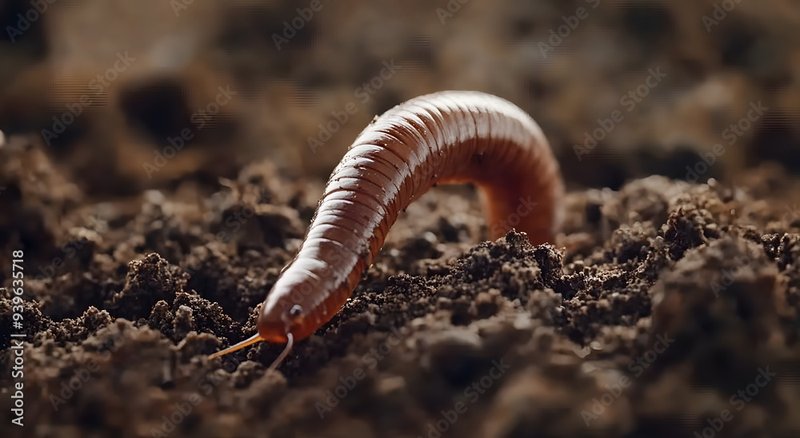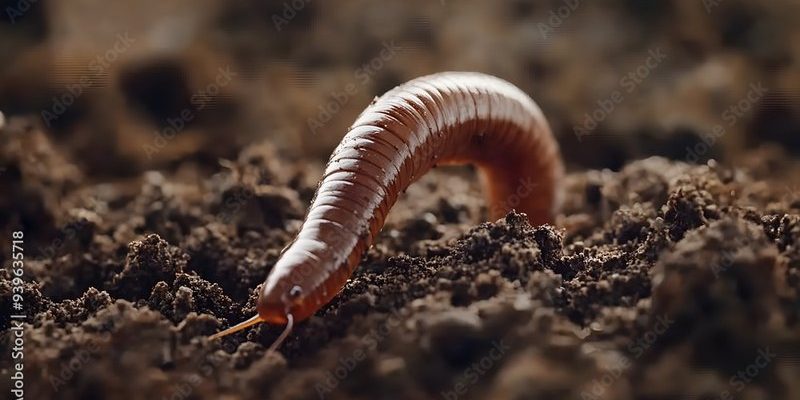
When earthworms munch on organic matter, they help decompose it while moving through the soil. They’re not just eating leftovers; they’re transforming waste into nutrient-rich castings that enrich the soil. You might say they’re nature’s recyclers, improving soil health as they go. So, how exactly do these little guys manage to aerate the soil? Let’s dig deeper.
How Earthworms Aerate Soil
Earthworms have a unique way of tunneling through the soil that significantly improves its structure. As they burrow, they break up compacted layers, allowing for better air and water movement. Think of it like a straw poking through thick pudding—once that straw is in place, the pudding becomes easier to stir and absorb.
Their tunnels can be several inches deep, creating pathways that not only improve aeration but also allow excess water to drain away. Without these tunnels, water can pool on the surface during heavy rains, leading to plant stress or even root rot. You could say earthworms are little superheroes, fighting soil compaction one wiggle at a time.
Moreover, these burrows provide a habitat for other beneficial organisms, like beneficial bacteria and fungi. This healthy, bustling community further enhances soil quality, helping plants to thrive. Most gardeners would agree: the presence of earthworms is a good sign that soil is rich and alive.
The Nutrient-Rich Castings of Earthworms
One of the best things about earthworms is their ability to produce what we call *vermicompost*, or worm castings. These castings are packed with nutrients and beneficial microorganisms. When earthworms digest organic matter, they break it down into a form that plants can easily use.
You might be wondering how these castings compare to traditional compost. Well, castings are typically richer in nutrients, including nitrogen, phosphorus, and potassium—all essential for plant growth. Some gardeners even say that worm castings are like liquid gold for the soil!
Incorporating worm castings into your garden can not only enhance soil structure but also encourage strong plant growth. Just mix a few tablespoons into your planting holes or spread it as a top dressing. The results can be pretty fantastic, leading to more vibrant flowers and robust vegetables.
Improving Water Retention
Earthworms help with more than just aeration; they also play a role in water retention. Their burrows allow water to infiltrate the soil rather than running off. If you’ve ever seen water pooling in your yard after a rainstorm, you know how frustrating that can be. Earthworm activity helps prevent that runoff, allowing water to soak in where it’s needed most.
When soil is well-aerated and contains plenty of earthworm tunnels, it becomes sponge-like, retaining moisture more effectively. This is especially valuable during dry spells when plants need every drop of water they can get.
If you’ve ever strayed into the world of gardening, you may have noticed that plants growing in rich, worm-friendly soil are often less stressed during drought. It’s a natural defense that helps keep your garden flourishing.
Earthworms and Plant Health
The relationship between earthworms and plants is a classic example of mutualism—both parties benefit. When plants have access to the nutrients from worm castings and the improved aeration from their tunnels, they tend to grow healthier and more robust.
Plants growing in soil rich in earthworm activity are often more resistant to pests and diseases. They get the nutrients they need to build strong cell walls and defenses, making it harder for pests to take hold. This is nature’s way of providing a nearly self-sustaining ecosystem.
Many gardeners swear by using earthworms as a natural solution for healthier plants. In fact, some even create worm bins, allowing them to cultivate their very own *earthworm army*. It’s an organic approach that’s easy to maintain and can have fantastic benefits for your garden.
Earthworm Species and Their Impact
Not all earthworms are created equal. There are various species, and some are better at aerating soil than others. For example, **Lumbricus terrestris**, or the common nightcrawler, is particularly effective at creating deep burrows, while **Eisenia fetida**, known as the red wiggler, is often used in composting.
Each species has its unique role in soil dynamics. Nightcrawlers are like the heavy machinery, digging deep and aerating large areas, while red wigglers do great work near the surface, breaking down organic matter and enriching the topsoil.
It’s worthwhile to note how the presence of different species can impact your garden. Gardeners often find that fostering a diverse worm population leads to healthier soil and, by extension, healthier plants. So, if you’re looking to improve your garden, consider encouraging a variety of earthworm species.
Compacting vs. Loose Soil: The Earthworm Difference
Have you ever compared the feel of compacted soil to well-aerated soil? It’s like walking on concrete versus walking on a fluffy cloud. Compact soil can feel hard and dry, while loosened soil is crumbly, rich, and alive. Earthworms are key players in this transformation.
When soil becomes compacted, it can hinder plant growth. Roots struggle to push through hard surfaces, and water finds it hard to reach deeper layers. This is where earthworms come to the rescue. Their constant tunneling activity breaks up compaction and opens up the soil structure.
To put this in perspective, consider a garden bed where earthworms thrive. You’re likely to find vibrant plants and flourishing flowers, while a compacted bed may yield stunted growth and overly dry patches. It’s a classic case of “you get out what you put in.” Earthworms are essential for ensuring that your soil remains a dynamic environment for growth.
Earthworms may seem small and inconspicuous, but their role as aerators and enrichers of the soil can’t be overstated. They’re efficiently breaking down organic matter, creating nutrient-rich castings, and improving water retention—all while making it easier for plants to access what they need to grow.
If you’re gardening or maintaining green spaces, think of earthworms as your best friends. They help create a thriving ecosystem that benefits not just your plants, but the overall soil health. As a gardener or even a curious nature lover, nurturing these little wrigglers can lead to a lush and productive environment.
So, next time you spot an earthworm in your garden, take a moment to appreciate the hard work it’s doing. You might even thank it for being a champion of soil health—because without them, our little green friend plants would have a much tougher time thriving.

